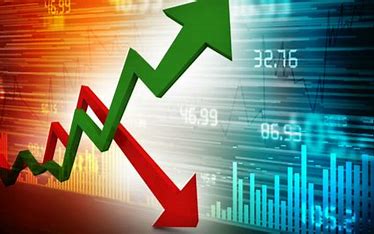Study shows that searches on the Internet for the topic skyrocket after a certain point

01/24/2023
Brazilians begin to be bothered by the dynamics of prices when inflation is higher than 3.7% in 12 months, a study from MCM Consultores found.
This means, in theory, that from this level on, consumers and companies start to take into account the dynamics of inflation in their day-to-day economic decisions. This would translate not only into an “expenditure of cognitive resources,” but also into the creation of frictions between the agents’ actions that make inflation more inertial – and the Central Bank’s work harder.
In an interview last week, President Luiz Inácio Lula da Silva questioned the inflation target pursued by the Central Bank: “You established an inflation target of 3.7%. When you do this, you are obliged to squeeze the economy more to reach the target. Why did you need to reach 3.7%? Why didn’t you do 4.5% like we did?” The 2023 target is 3.25%, with a tolerance interval of 1.5 percentage points, up or down.
To reach this result, the study uses the annual variation in the frequency of searches for the term “inflation” in Google Trends in Brazil as a way to measure people’s interest or concern about the topic. It compares this data with the inflation over 12 months, measured by the official inflation index IPCA. The studied period goes from November 2005 to October 2022.
The results suggest that, between zero and 3.7%, the interest for the word is low and statistically not significant. In other words, Google searches cannot be attributed to current inflation. This, in fact, is the state considered ideal or optimal from an economic point of view, equivalent to an environment of so-called “price stability.”
From this point on, however, there is a jump in the frequency of searches for the word on Google, which moves into a new, statistically significant regime.
“If inflation starts to increase a lot, people become interested in the subject and this starts to generate effects in terms of prices and wages,” says Vitor Kayo de Oliveira, an economist at MCM Consultores who led the study.
Mr. Oliveira’s experiment employs, with some modifications, a methodology borrowed from a paper by economists Oleg Korenok, David Munro, and Jiayi Chen, published in September last year. They investigated the subject using data from 37 countries and came to the conclusion that, for this group, this threshold is between 2% and 4%. In the United States, the reference economy, it came to 3.55%.
The research led by Mr. Korenok was cited in a recent article signed by Olivier Blanchard for the Financial Times. In it, the former chief economist of the International Monetary Fund (IMF) again advocated a change in the inflation target pursued in developed countries, to 3% per year from 2%.
Mr. Blanchard is one of the mainstream economists who have been advocating a higher inflation target for developed countries since the 2008 financial crisis. The argument, since that time, has been that a 2% target made it too narrow for central banks to act in times of crisis without falling into the “zero lower bound” — the limit beyond which conventional monetary policy loses effect.
At first, however, Mr. Blanchard advocated for a looser target of 4%. In his article last year, he advocated 3%, considering, among other things, the work of Mr. Korenok and his colleagues.
In practical terms, “the ideal would be to set the inflation target below this threshold. This way, people wouldn’t worry about inflation, with the indexation of prices and contracts, for example, and the work of monetary policy would be easier,” says Mr. Oliveira.
In the case of the United States and other developed economies, he adds, this means an expansion of the target, currently at 2%. In the Brazilian case, the threshold found in the experiment is not far from the current target, which is 3.25% this year and 3% as of 2024.
“Ideally, from the point of view of how people interact with inflation, it would be to keep it below that 3.7%,” says Mr. Oliveira.
Mr. Korenok and his coauthors also studied Brazil but did not find enough evidence that there was a relationship between inflation dynamics and people’s interest. To reach his result, the MCM economist used some controls, such as the economic slack measured by the Central Bank’s Economic Activity Index (IBC-Br) and the three-month moving average of the FGV’s Consumer Confidence Index.
Unlike the original, Mr. Oliveira’s experiment also allowed more than one “jump” in interest for inflation on the internet. This third step appears at 8.1%, when Brazilians’ attention to inflation is 50% more intense than in the previous state.
*By Marcelo Osakabe — São Paulo
Source: Valor International
